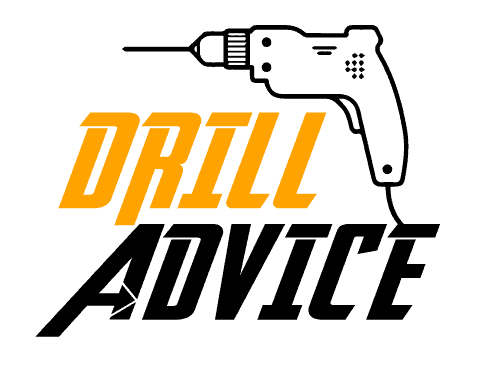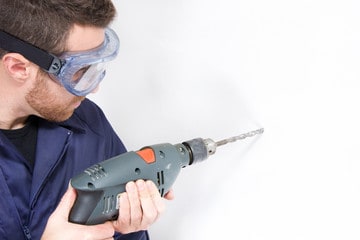Normally, we can use a masonry drill bit for stones. There are types of masonry drill bits. Those are made with different materials such as carbide, tungsten, titanium, and diamond powder. Using these kinds of drill bit always withstands for the stone rather than a regular drill bit.
So let’s see, in-depth detail about drill bits for stone. The below guide will help you to select the right type of masonry drill bit for you quickly. So let’s keep reading on.
What is Stone Drilling?
Stone drilling is the process of creating holes in various types of stones using different drilling techniques and equipment. The purpose of drilling stones may vary, but it is generally done for construction, mining, geological exploration, jewelry making, or other craft and artistic purposes.
There are several types of stones that can be drilled, ranging from soft stones like soapstone and alabaster to harder stones like granite, marble, and quartz. Each type of stone has unique characteristics and requires specific drilling techniques and tools.
The hardness of a stone is an important factor to consider when drilling. The Mohs scale is often used to measure the hardness of stones, with talc at 1 (softest) and diamond at 10 (hardest). Harder stones require more robust drilling equipment and more time to drill.
The purpose of the drilling will determine the size and depth of the hole needed. For example, drilling for jewelry making may require small, precise holes, while drilling for construction or mining may require larger, deeper holes.
The RPM and BPM will depend on the type and hardness of the stone. For soft stones, a higher RPM (around 2000-3000) and lower BPM may be sufficient. For harder stones like granite, a lower RPM (around 500-1000) and higher BPM may be necessary.
There are several types of drills that can be used for stone drilling, including rotary drills, hammer drills, and diamond core drills. The type of drill used will depend on the stone type and the purpose of the drilling.
What Types of Masonry Drill Bits Need For Stone?
Masonry drill bits can be used to drill stones. These are harder materials. Hence hardest drill bits are essential for drilling purposes. Normally, we can use the same drill bit for both stone.
It is really hard to drill into these materials, and as a result of this, special drilling machines are used. These drilling machines are called hammer drills.
Hammer drills have a hammering mechanism. There, the drill bit moves forward and backward along the drill bit axis. Due to this, front-side materials are crushed and dusted. Finally, dust comes through the flutes.
In order to withstand this mechanism, stronger drill bits are needed. Hence, drill bits are made with different harder materials such as carbide, tungsten, diamond, etc.
When you choose a drill bit for these, you should select these types of drill bits
01. Carbide Tip Drill Bit

Carbide Drill Bits are made of tungsten carbide. In addition, bitumen is less reactive with iron because it has a lower percentage of cobalt.
Physical properties
- Although the hardness of carbide drill bits is not the same as the hardness of diamond, its hardness is high. Because the Moh’s scale is between 8.5 and 9.
- Carbide tip drill bits have high thermal resistance because their melting point is 28700C.
The tip angle of any drill bit varies depending on the material to be drilled using it. Most cobalt tip drill bits are used to drill hard materials, so their tip angle is 140 degrees.
The Carbide drill bit can sharpen. Therefore, it can be used for long-term purposes.
02. Tungsten Tip Drill Bit
Tungsten oxide mixes with graphite (carbon) and heats above 1200˚ C (2200˚ F). A chemical reaction that takes place removes oxygen from the oxides and combines carbon with tungsten to form tungsten carbide.
To use the carbide tip drill bit, very high-level equipment must be used because these drill bits are the strongest bit.
Physical properties
Tungsten tip drill bits have high thermal resistance because the Melting point is 2,785–2,830 °C and the boiling point is 6,000 °C.
These bits have an outer coating. Indeed, this coating helps in fast and efficient drilling work.
Under this type, there has few variations according to the material;
- Tungsten Steel Alloy
- Tungsten Carbide
03. Tungsten Carbide Drill Bit

- Material – Tungsten Carbide
- Chemically treated tungsten carbide has high thermal insulating properties.
- The melting point at 2,870 °C (3,140 K)
- The boiling point of 6,000 °C (6,270 K)
- Four flutes of these bits are designed to clean debris during fast and efficient excavation.
- During the drilling, three flats on the shank eliminate bit of slipping in the chuck.
- The tip of this bit is rock carbide, which maximizes carbide surface contact and gives a longer bit life.
- Also, this type of masonry drill bit has a two-cut carbide tip for a longer lifespan.
04. Diamond Drill Bit
A diamond-tipped drill bit is a type of masonry drill bit that is created with diamond particles on the tip or cutting edge. This gives the drill bit increased hardness and durability, making it capable of drilling through hard materials such as glass, ceramic, stone, and some metals.
When using a diamond drill bit, you don’t need any hammering action. Due to the hardness of the diamond bits, they can drill into the stones easily. Most of diamond drill bits are core drill bits. Hence those can be used to drill wider holes in the wood and stones. More than that, diamond drill bits can be used to drill stones, and rebars. That is an awesome tool you should have in your toolbox.
Diamond-tipped drill bits are often used in precision drilling applications requiring a clean, precise hole. They can be used to drill holes in a variety of materials, including tiles, bricks, concrete, and granite. Diamond-tipped drill bits are also commonly used in the jewelry industry for drilling through precious stones and gems.
What Drilling Machine Need for Stone?
Normally, we can use light tools and heavy-duty tools for drilling stones. At home, we can use a regular hammer drill, in the site we can use rotary hammers, and beyond that, we can use a huge drilling machines with larger diameter core bits for both stone.
Let’s talk about DIY and construction sites.
1. Hammer Drills
Hammer drills are small in size. It can operate 110V domestic voltage or 12V, 18V batteries. Hence these tools can be used to small-size projects. Normally, hammer drills have a hammering action. These tools have a low-power hammering action, which is sufficient for DIYs. Hammering action is measured by the BPM, and it is 30,000 for the hammer drills. Sometimes this can be exceeded than that.
2. Rotary Hammer (SDS Drills)
Rotary hammers, and SDS drills are made as the same tool. Rotary hammers are heavy-duty tools. Those are suitable for construction purposes. There is a piston-based hammering mechanism, and it can be 50,000 higher value. Due to the heavy-duty hammering mechanism, larger diameter drill bits can be used on these tools.
How to Drill Stone?
When you need to drill stone, you should follow the below steps. First of all you will need few more tools in order to have a good result.
Instruments for Drilling Stone
- Hammer drill
- SDS max drill bits
- A power source (battery or power cable)
- Water as coolant
- Dust removing method
- Safety instruments (mask, gloves, goggles)
6 Steps to Drill Stone?
Follow these 6 steps to drill stone.
1. Clean the area you are going to drill. Make sure the drilling machine can be reached to the exact place and there is sufficient space with suitable power sources
2. Mark the point you need to drill. Make sure there is no pipeline or power line, especially drill on the stone.
3. Start with lower RPM. if step 1,2 alright, you can set up the drilling machine and then start lower RPM at the beginning. If you can start without a hammering function, you can place it properly. Gradually you can increase the RPM.
4. Apply dust removal method to remove the dust. Because stone dust can cause many respiratory problems when you do this prolonged
5. Use water as a coolant if it is necessary. When you feel the bit is overheating too much, you can use water as a coolant. But overhead drilling and water is not good solution.
6. Clean the drilled hole and then close it properly with a suitable cap. Sometimes holes can be filled with debris. Hence you can close it properly.
What Should You Avoid Drilling Stones?
You should avoid these common mistakes or unsafe practices to prevent damage to the stone, the drill, or even personal injury.
- Drilling stone without safety equipment – Always use safety glasses, gloves, and a dust mask to prevent injury from flying debris and inhaling dust.
- Using the wrong drill bit on stone drilling – Different stones require different types of drill bits. Using the wrong one can damage the stone or the drill.
- Applying too much pressure on stone drilling – This can cause the stone to crack or shatter. It’s better to let the drill do the work and apply steady, moderate pressure.
- Drilling stone too fast – This can cause the drill bit to overheat and become dull or even break. It’s better to drill slowly and steadily.
- Drilling without water as coolant – Especially for harder stones, using water can help reduce heat and dust.
- Not securing the stone – If the stone isn’t properly secured, it can move around and cause injury or damage.
- Ignoring the signs of wear and tear on your drill bit – A worn-out drill bit can cause more harm than good. It can damage the stone, the drill, or even cause injury.

